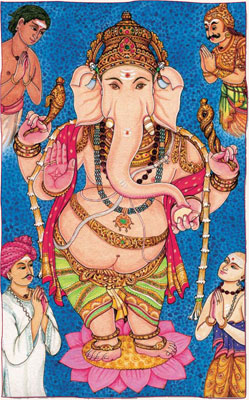 What about caste and untouchability?
What about caste and untouchability?
Caste is the hereditary division of Indian society based on occupation. The lowest class, deemed untouchables, suffer from discrimination and mistreatment. It is illegal in India to discriminate against, abuse or insult anyone on the basis of caste.§
 aste, from the Portuguese casta, meaning “clan” or “lineage,” refers to two systems within Hindu society. The first is varna, the division of society into four groups: workers, business people, lawmakers/law enforcers and priests. The second is jati, the thousands of occupational guilds whose members follow a single profession. Jati members usually marry within their own jati and follow traditions associated with their jati. In urban areas they often enter other occupations, but still usually arrange marriages within the jati. §
aste, from the Portuguese casta, meaning “clan” or “lineage,” refers to two systems within Hindu society. The first is varna, the division of society into four groups: workers, business people, lawmakers/law enforcers and priests. The second is jati, the thousands of occupational guilds whose members follow a single profession. Jati members usually marry within their own jati and follow traditions associated with their jati. In urban areas they often enter other occupations, but still usually arrange marriages within the jati. §
Wealth, especially in urban areas, often trumps caste. Industrialization and education have greatly altered India’s jati system by eliminating or changing the professions upon which it was originally based, and opening new employment options. The jatis are evolving to function today less like guilds and more like large clans of related families. At the bottom are the so-called untouchables, who perform the dirtiest jobs and have suffered much like the black people of America, who were freed from slavery just 138 years ago. Strong laws have been passed in India to end caste-based discrimination. Modern Hindus rightly deplore caste abuse and are working to set matters right. Just as in the US, it is a difficult task that will take decades, especially in the villages.§
Elaboration: Caste is, no doubt, the biggest stick that Hindus get beaten with. It is taught as the defining attribute, or fatal flaw, of Hinduism in Western schools. Untouchability as a formal system shocks Westerners. One response we can make is to separate social stratification from the issue of racial/class discrimination. §

Representatives of the four castes, or varnas, are shown here surrounding Lord Ganesha. They are: worker, businessman, general and priest. These are natural divisions which appear in all nations and societies as shown by the universal existence, in some form, of labor unions, businessmen’s associations, armies and police forces, and religious ministers.§
First issue: social stratification. India is one of the world’s oldest societies. It has sustained a continuity of culture and religion for thousands of years. Europe, on the other hand, has seen millenniums of upheaval. Still, one only has to go back to before the 17th-century industrial revolution to find a social system that is similar to caste. European society then comprised the landed elite (including royalty, a hereditary caste maintained to this day), merchants, artisans and peasants. The artisans formed guilds, occupation-based organizations that served both as closed unions and marketing monopolies. The guild legacy remains in Western surnames such as Smith, a metal worker. There was no public education system, and each generation learned at home the family occupation. There was little technological change, so jobs were static. Industrialization and public education altered (but did not destroy) this class system in the West, just as they are changing caste and jati in India today.§
Second issue: racial/class discrimination. Most Indians are unfamiliar with the extent of discrimination in the West today. In America, for example, hundreds of thousands live destitute and homeless on city streets, as true “untouchables.” US cities are more racially segregated than before the 1950s Civil Rights Movement because of “white flight” to the suburbs. Black Americans receive harsher sentences than white Americans for the same crime. Many Native American Indians live at the bottom of society, destitute and alcoholic, on barren Indian reservations. This kind of response—we can call it the “You’re one, too” defense—doesn’t mean Hindus should not work much harder to end caste discrimination. But it reminds others that no country in the world is yet free from racial discrimination. §
